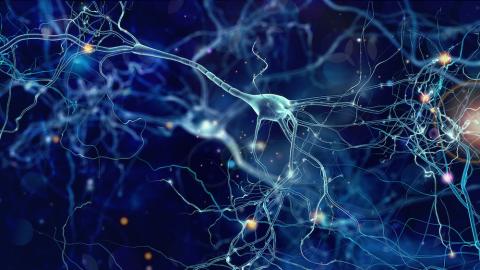Researchers identify receptor activation mechanism crucial to nervous system development

A new study has uncovered a mechanism that is one piece of the puzzle that allows the brain and central nervous system to self-assemble during development. These findings could help scientists develop potential therapies for central nervous system injuries.
The study, published on March 20 in the journal Nature Communications, marks an advancement in the understanding of how receptors in neurons control axon pathfinding, a process by which neurons are oriented and which is crucial during the development of the nervous system. The study also illustrated the binding interactions at one receptor, called Robo3, which the researchers said was previously not well understood.
“As a neuroscientist you want to understand how the brain functions, but I think you also want to understand how the brain is built in the first place,” said Alexander Jaworski, an assistant professor of brain science at Brown University and co-senior author of the study.
During development, the nervous system assembles itself using genetic information to determine neurons’ final locations. Following the developmental phase, the central nervous system is unable to regenerate itself after injury. Better understanding of processes like axon guidance have key implications in the context of therapeutic options for nervous system injuries or neurodegenerative diseases, according to the researchers.
“If we fully understand the processes behind how the nervous system self-assembles during embryogenesis, we can then take these programs that exist within the cell already and engineer them to regrow a neuron later in life,” said Zachary DeLoughery, a graduate student in Jaworski’s lab and co-first author of the study.
The study is a result of an equal partnership between the Jaworski Lab and Engin Özkan’s lab at the University of Chicago. The collaboration began at a conference in 2016 after Özkan attended a poster presentation by DeLoughery. Özkan became interested in DeLoughery’s research, and he reached out to Jaworski.
“We said we should collaborate and (that was) pretty much when the project was born,” said Jaworski, who is affiliated with Brown’s Carney Institute for Brain Science.
A group of receptors called the “Robo family” are known to be involved in axon guidance. Jaworski’s lab was specifically interested in Robo3, because it was previously known to behave in a way that was unique in comparison to the other Robo receptors. During his postdoc, Jaworski had discovered a ligand, named NELL2, that bound to Robo3 and was involved in the process of axon pathfinding. This project identified the interactions that form the basis of that bond.
Özkan’s lab focused on the structural biology of the receptor-ligand bond, while Jaworski’s lab conducted molecular biology analyses and ran functional experiments. The researchers were able to determine how the binding between the receptor and the ligand occurred.
“We discovered which parts of the protein are necessary and sufficient to interact with each other,” said DeLoughery, a Ph.D. student in molecular pharmacology and physiology. “Our collaborators took that one step further and generated a crystal structure of this interaction, which gave us the specific amino acids involved in this interaction.”
Once the scientists had that crystal structure, they were able to make mutations in the ligand to disrupt the binding interaction. This, DeLoughery said, allowed them to use in vitro experiments — relying on isolated neurons in a petri dish — to assess how changing the affinity of NELL2 for Robo3 impacted the neuron’s behavior.
The functional assays work by allowing researchers to visualize how a neuron interacts with various cues, such as the wildtype or mutated NELL2 ligand. If the cue attracts the axon, it is steered in one direction. But if it repels the axon, its path changes.
“A series of these attractive and repulsive interactions will steer these axons to their final target where they need to make a synapse,” DeLoughery said.
When the researchers used the mutated ligand to adjust NELL2’s affinity for Robo3, they saw changes in the strength of the axon guidance response. They were also able to determine how Robo3 differs from the other two known receptors in its “family” — Robo1 and Robo2. Robo3 has a completely unique function and seems to have evolved in a divergent fashion from the other Robo receptors, DeLoughery said.
“We know exactly why this receptor is different from the other family members, and how it binds this new ligand (NELL2) that the other family members cannot bind,” Jaworski said.
And DeLoughery added: “This was the first study to our knowledge that demonstrated that affinity of the ligand for its receptor actually dictates the strength of the axon guidance activity.”
Now, the scientists hope to look into how this information can tell them more about how the Robo receptors evolved.
“The most interesting thing about this is it gives us a little bit more insight into how this family of receptors might have evolved, and what that means for mammalian nervous system wiring,” Jaworski said.
According to Jaworski, the next step in the project is to research how the binding activities they observed may be conserved across species, from insects to zebrafish, mice and humans.



